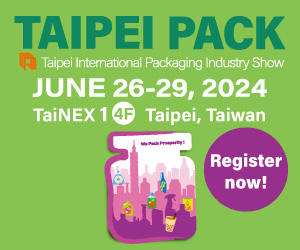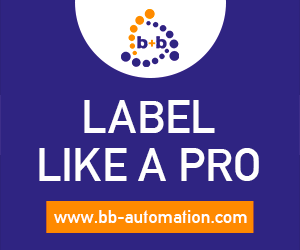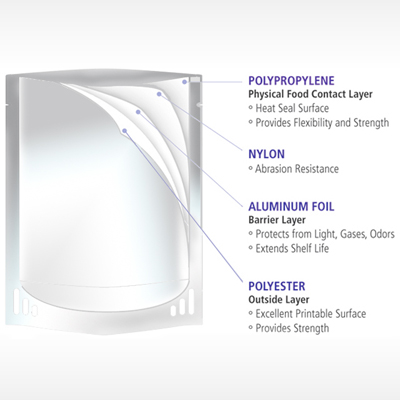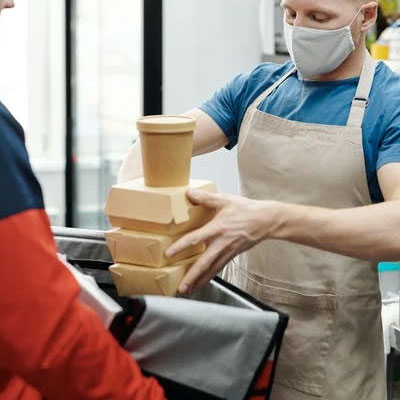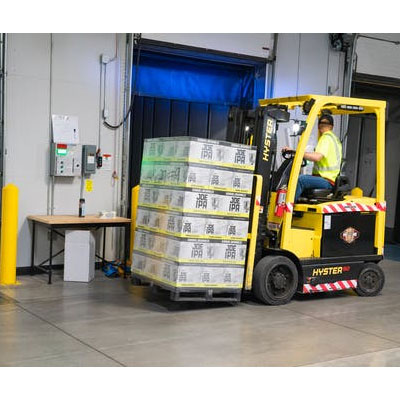Articles
The Importance of Packaging in Product Promotions
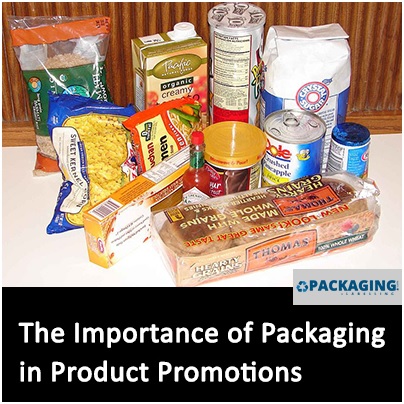
Packaging is one of the critical aspects of the distribution process. When people buy an item at their local grocery store, they are more concerned about what’s wrapped inside the packaging than the packaging itself. Many reasons are considered for using packaging on a given product such as display, convenience, for handling, sale, security concerns, barrier protection, physical protection, information transmission, agglomeration or containment, marketing and finally portion control. Product packaging plays an important role in the marketing success or failure of many products especially for non durable consumer products.
Importance of product packaging
A) Packaging must be functional
An utmost importance of product packaging is how functional it is. Preventing damage when transporting the product from manufacturer to store and then from store to someone’s house is the main function of packaging. Taking an example of food product’s packaging – the item must be packaged heartily enough to survive transit and then to be stored in someone’s home, either in the refrigerator or on a shelf. To market the product well means it must also look great and selecting plastic, paper, aluminum or some other substance is of great importance. The importance of product packaging in marketing cannot really be understated. Manufacturer product packaging is often presented in a beautiful package designed to entice customers to buy the product and then to continue buying it. Part of this is that you don’t want the customers not only to buy, but also to recommend the products to their family and friends. One should carefully consider every aspect of marketing the product so that it results in the most profitable impact.
B) Colors affect purchasing decisions
The color used in your product packaging plays a vital role in consumer buying decisions. Choose your colors accordingly, as your brain reacts to colors in different ways. For example, the products with white packaging convey safety, simplicity, and purity. As per experts, the more color added to a product’s package, the less sophisticated the product is. Few other colors like blue imply many different meanings. Generally, a light sky blue color is considered more playful and a dark navy is considered much more professional. Universally, blue is the most liked color, but that doesn’t mean you should automatically choose the likable color. Before deciding on a color scheme for your product packaging, it’s important that to study your target demographic.
C) It differentiates your brand from others
There are many products on the market vying for your customer’s attention. One-third of a consumer’s decision making is based solely on product packaging. Your brand packaging has to stand out and look different from your competitors, to succeed. Not only the design should be relevant to the name of the product, but should also be eye-catching and highly different from what many of the competitors offer. Often most of the retailers group similar products on shelves, so the need to separate your products from the competition is highly important. An eye-catching and a well-made product packaging is a great way to do just that. The design should be different, while the shape and size of the packaging may be similar to the competition. The style, fonts, and colors you select for your packaging can easily help set your product apart from other companies. Novel and innovative designs such as clear plastic boxes will catch the consumer’s eye and help put your product different from others.
D) Protects the product
Product packaging serves to protect the product inside at its most base level. The packaging must keep the product safe during shipment between the manufacturing facility and the retailer and must prevent damage while the product sits on the shelf. Hence, product packaging must be reliable and sturdy. Most of the companies package their products with locks and seals that prevent tampering and further ensure the safety and integrity of the product. The consumers expect their products to function exactly as intended as secure and dependable product packaging is the best way to ensure just that. The protective packaging solutions industry utilizes raw materials from various sources to produce useful, sustainable, and promising products that businesses can use for shelving, storing, or traveling their goods from one place to another.
E) Attracts buyers
It’s crucial to consider the wants and needs of the consumer when considering the importance of product packaging. Attracting customers and encouraging them to buy your product is the main goal of creating any product. As first impressions are so important to the buying process, a well-designed product packaging can go a long run in putting your product into the hands of the buyers. Selecting a style and color that will appeal to consumers and encouraging them to pick up your product is very important, as is selecting high-quality packaging materials. The product packaging is an expression of the product inside and the brand as a whole. Many brands conduct extensive research into the wants and needs of consumers to ensure their packaging is attractive and compelling when designing product packaging.
F) Displays and promotes the product
Another important aspect of product packaging is how it promotes and displays the product within. Various products, especially food products, include a nutritional information and description of ingredients on the packaging. While other product packaging may show instructions explaining on how to set up and use the product. Consumer expectations can be usually met by displaying important information regarding the product and this even promotes customer satisfaction. It’s because the better the buyer understands what they are purchasing; the more likely they are to be happy with said purchase. Few other product packaging forgoes wordy instructions and simply let the product speak for itself. The customer can clearly view the product in real-time using window box packaging or clear plastic boxes. Most of them prefer this over relying on drawn diagrams and written explanations. Customer satisfaction and the likelihood of purchase can be increased when one can properly view the product for themselves.
Now that you have known the importance of packaging in product promotions, the types of packaging in marketing to be considered is also equally important. It often becomes difficult to select the most appropriate packaging solution for your product, with all the packaging and box choices available in today’s market. Let’s take a look at some of the different types of packaging in marketing you can use to enhance your product and customer experience.
• Paperboard boxes – A paper-based material that is lightweight, yet strong. A paperboard packaging comes in various forms, each suitable for various packaging requirements. For packing medicines, cosmetics, milk and juice, frozen food and more SBS (or solid bleached sulfate) paperboard can be used. For those who prefer the environmentally-friendly and natural look of recycled paper, kraft, or CUK (coated unbleached kraft) paperboard packaging is used. Paperboard packaging can look high-end, without high-end pricing with the right combination of design options.
• Corrugated boxes – these simple refer to what is commonly known as Cardboard. These corrugated boxes are the ones many generally consider as cardboard, as it produces the large shipping, shoe and storage boxes. These types of boards can be reused and recycled again and again as a source of pulp fiber. Other applications of corrugated board packaging include small consumer goods packages, retail packaging, pizza delivery boxes, and so forth.
• Plastic boxes – From spaceships to paper clips, plastics is used in a wide range of products. Plastic has replaced many traditional materials such as leather, glass, ceramic, wood, and so on. Plastic box packaging offers many advantages in which they can be recycled and usually they are more durable compared to paperboard boxes. The quality of food can be preserved and any contamination issues can be eliminated with airtight plastic packaging containers. Moreover, plastic packaging also does not break easily and can be stored with food under extreme conditions. Because of its ability to showcase the product at any angle without necessarily opening the packaging, plastic is a popular choice for packing material. Compared to glass, and other materials, plastic is in fact recyclable.
• Rigid Boxes – A rigid box is usually made out of highly condensed paperboard that is 4 times thicker than the paperboard utilized in the construction of a standard folding carton. The rigid boxes, compared to paperboard and corrugated boxes are definitely among the most expensive box styles. These boxes are commonly used in merchandising jewelry, cosmetics, technology and high-end luxury couture.
• Chipboard packaging – Used in industries such as medical, cosmetic, electronic, and beverage. It’s basically a type of paperboard that is made out of reclaimed paper stock. It can be easily, folded, cut, and formed. A cost-effective packing option for your products. Although the chipboard packaging cannot be used for heavy items as it’s a lightweight material. It can be used for grocery items such as tissue boxes, crackers, cereal, and so forth. Moreover, if the storage environment is heavy with moisture, the chipboard can easily weaken resulting in expansion and discoloration.
• Poly bags – Also known as a pouch or a plastic bag, the poly bags is manufactured out of flexible, thin, plastic film fabric. One of the common types of packaging in marketing and can carry a variety of products including flowers, chemicals, magazines, food items, waste, and so on. They are durable yet lightweight, reusable and flexible. As the polybags are structurally simple to make, it can be fully customized in style, design and sizes. However, it will still remain cost-effective. Most of the polybags are made with hanging holes, security features, carrying handles and tape attachments to make sure the products are well secured and visually appealing to the customer.
• Foil sealed bags – these can be seen typically in most coffee and tea packaging as these bags keep the products dense to maintain the flavor, protect it from bacteria coming in and helps increase shelf life. Besides food, the foil sealed bags are also used to package clothing and bedding products. Smoked fish, cheese, cereals, nuts, and cured meats are also packaged with foil sealed bags to prevent from spoilage.





